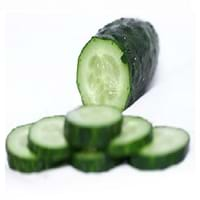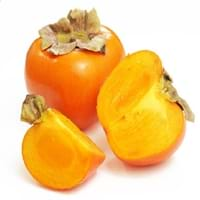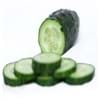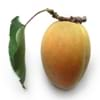Health Benefits
Arthritis treatment, Cancer prevention, Eczema treatment, Increases metabolic rate, Kidney stone treatment, Prevents constipation, Removes toxic metals, Treatment of alzheimer's disease
Anti-oxidant properties, Beneficial in curing fever, Cancer prevention, Heart care, Reduces nervous tension
General Benefits
Anti oxidant properties, Anti-inflammatory properties, Controls blood pressure, Digestive aid, Strengthens bones, Treatment of sore eyes
Anti-inflammatory properties, Boosts immune system, Controls blood pressure, Digestive aid, Eye care, Fights against infections, Helps in weight loss, Improves blood circulation
Skin Benefits
Heals sunburn, Hydrates skin, Skin rejuvenation, Skin revitalization, Treatment of dark spots, Treatment of skin diseases
Anti-aging benefits, Brightens and lightens complexion, Reduces wrinkles
Hair Benefits
Promotes longer and healthier hair, Protects hair, Regulates hair growth, Shiny hair
Good conditioner, Promotes longer and healthier hair, Treatment of dandruff
Allergy Symptoms
Breathing difficulty, Decrease in blood pressure, Diarrhea, Itching, Red rash, Runny nose, Sneezing, Vomiting, Watery eyes
Abdominal pains, Anaphylaxis, Inflammation
Side Effects
Stressed heart, Irritation, Swelling, Swelling around mouth, Throat swelling, Tongue swelling, Strained blood vessels
Affects blood glucose levels, Decrease in blood sugar levels, Coagulation
Lactating Women
Not Available
No
Best Time to Eat
Along with meal, As a snack in the late afternoon, Eat the fresh ones, avoid mixing with any other foods, don't eat after meal., Strictly avoid empty stomach
Along with meal, As a snack in the late afternoon, Don't consume at night and before bed, Eat the fresh ones, avoid mixing with any other foods, don't eat after meal.
Vitamin A (Retinol)
Not Available
Vitamin B1 (Thiamin)
Not Available
Vitamin B2 (Riboflavin)
Not Available
Vitamin B3 (Niacin)
Not Available
Vitamin B5 (Pantothenic Acid)
Not Available
Vitamin B6 (Pyridoxin)
Not Available
Vitamin B9 (Folic acid)
Not Available
Vitamin C (Ascorbic Acid)
Vitamin E (Tocopherole)
Not Available
Vitamin K (Phyllochinone)
Not Available
Lutein+Zeaxanthin
Not Available
Phytosterol
Not Available
Calories in Fresh Fruit with Peel
Calories in Fresh Fruit without Peel
Not Available
Calories in Frozen Form
Not Available
Not Available
Calories in Dried Form
Not Available
Calories in Canned Form
Not Available
Not Available
Calories in Juice
Not Available
Calories in Jam
Not Available
Calories in Pie
Not Available
Type
Fruit vegetable, Melon
Berry, Tree fruit
Season
Spring, Summer
Autumn, Winter
Varieties
Armenian, English, Garden, Kirby, Lemon and Persian
Early Golden, John Rick, Miller, Woolbright and Ennis
Color
Dark green, Green
Orange, Red, Yellow
Inside Color
White
Yellow
Taste
Juicy, Watery
Sweet
Origin
India
Eastern United States
Soil Type
Loam
Sandy loam, Well-drained
Climatic Conditions
Warm
Can tolerate wide range of climates, Sunny
Facts about
- Outer waxy coating of cucumber can erase the pen writing.
- Pressing cucumber on roof of mouth for 30 sec will eliminate bad breath.
- It is made up of 96% water.
- English cucumber can grow longer than 2 feet.
- It is said that formation of seeds inside the persimmon fruit shows what type of winter is coming(type of snow).
- There are about 2000 varieties of this fruit.
- The American persimmon has another name 'Possumwood'.
Other Countries
Egypt, Indonesia, Iran, Japan, Russia, Spain, Turkey, Ukraine, United States of America
Azerbaijan, Brazil, Costa Rica, Japan, Korea, Pakistan
Top Importer
France
United States of America
Top Exporter
Spain
United States of America
Botanical Name
Cucumis sativus
Diospyros virginiana
Synonym
Not Available
Not Available
Subkingdom
Tracheobionta
Tracheobionta
Division
Magnoliophyta
Magnoliophyta
Class
Magnoliopsida
Magnoliopsida
Subclass
Dillenhidae
Dillenhidae
Order
Cucurbitales
Ericales
Family
Cucurbitaceae
Ebenaceae
Species
C. sativus
D. virginiana
Generic Group
Not Available
Not Available
Difference Between Cucumber and American Persimmon
We might think that Cucumber and American Persimmon are similar with respect to nutritional value and health benefits. But the nutrient content of both fruits is different. Cucumber and American Persimmon Facts such as their taste, shape, color, and size are also distinct. The difference between Cucumber and American Persimmon is explained here.
The amount of calories in 100 gm of fresh Cucumber and American Persimmon with peel is 15.00 kcal and 127.00 kcal and the amount of calories without peel is 12.00 kcal and Not Available respectively. Thus, Cucumber and American Persimmon belong to Low Calorie Fruits and High Calorie Fruits category.These fruits might or might not differ with respect to their scientific classification. The order of Cucumber and American Persimmon is Cucurbitales and Ericales respectively. Cucumber belongs to Cucurbitaceae family and American Persimmon belongs to Ebenaceae family. Cucumber belongs to Cucumis genus of C. sativus species and American Persimmon belongs to Diospyros genus of D. virginiana species. Beings plants, both fruits belong to Plantae Kingdom.









